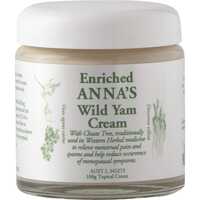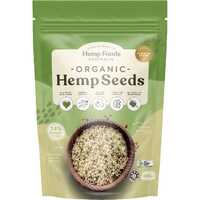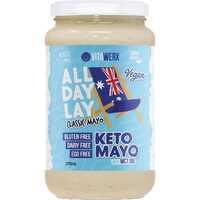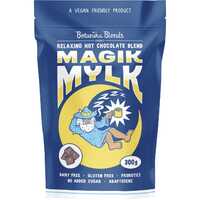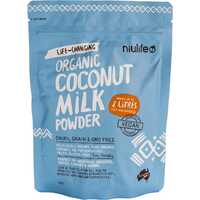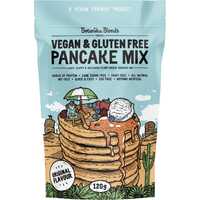Dairy products like milk, butter, and cheese are widely consumed in the Western world. Loved for their rich taste, creamy texture, and nutritional advantages, dairy has become a central ingredient in many global cuisines. Over recent years, however, more and more people have been deciding to avoid dairy foods. From the potential health risks associated with dairy to widespread environmental and ethical concerns, the dairy-free market is growing all the time. If you want to avoid dairy products in your life, there are lots of great alternatives out there.
Let's take a look at dairy foods, review potential problems associated with the industry, and list some of the best dairy-free alternatives on the market today.
What Exactly is Dairy Anyway?
Dairy products, also known as lacticinia, are food products made from or containing milk. Most modern dairy products come from cows, although they can also come from buffalo, goat, and ewe, among other animals. Milk plays an essential role in feeding young mammals, not just for boosting nutrition with protein and lactose but also for building immunity and fighting disease. Along with feeding infants through breastfeeding, milk is also made into a range of commercial food products for consumption beyond infancy.
In addition to milk itself, a variety of other dairy products are in common use across the world. Popular forms of dairy include butter, cream, cheese, yogurt, and ice cream. Despite having animal origins, eggs are not a form of dairy. Instead, they are simply classified as a protein food. While most dairy products are consumed worldwide, the level of consumption varies significantly based on the surrounding cultural context.
Global Dairy Consumption
Rates of dairy consumption vary widely across the world. While milk and other dairy products are a staple in the West, consumption rates drop considerably throughout the Middle East, much of Africa, and most of East and Southeast Asia. Stark differences in milk consumption rates are largely due to a chance mutation thousands of years ago. This mutation spread across northwestern Europe and enabled the production of lactose. For people in this part of the world, milk could be used as a new source of nutrition and sustenance during times of scarcity.
High-consumption dairy nations include most European countries and those with European history, along with Israel, Kyrgyzstan, Argentina, Costa Rica, and Pakistan. Medium-consumption nations include most of the Middle East and Latin America, along with India and much of North and Southern Africa. Low-consumption countries include most of Central Africa and East and Southeast Asia. Australia has one of the highest rates in the entire world, with 226 kg of dairy consumed annually per capita.
Measured as milk equivalent (ME), or the measure of fluid milk in processed dairy products, only European Union nations consumed more than Australia at 256 kg per capita. New Zealand and the United States were almost identical with Australia using figures from 2021, followed by Canada, Belarus, the United Kingdom, Ukraine, Argentina, and Russia. Australia was 4th globally for milk consumption alone, topped only by Ukraine, Belarus, and New Zealand. It was also 4th for cheese consumption, behind the EU, the United States, and Canada. Australia came in at 6th for butter consumption, behind New Zealand, Belarus, India, the EU, and Canada, respectively.
The Benefits of Dairy
Milk and other dairy products are often labelled as healthy. Among other things, dairy products are a great source of calcium, protein, and lactose. These compounds are linked to our physical structure, with calcium helping to maintain bone density, protein providing protection from age-related muscle loss, and lactose contributing to mineral absorption and gut flora. In addition, many dairy products are fortified with vitamin D and other micronutrients to help boost their nutritional profile.
Why Some People are Saying NO to Dairy
Over recent years, however, there has been significant growth in the number of people staying away from dairy products. There are multiple categories of people avoiding dairy, from strict vegans to flexitarians and people with lactose intolerance. People choose not to consume dairy products for varying reasons, with health, environmental, and ethical reasons noted along with philosophical, religious, and spiritual beliefs.
Health Issues Associated with Dairy
There are numerous health benefits associated with dairy, but there are also potential risks. First and foremost, milk and other forms of dairy are very high in saturated fat, which has been linked to heart disease, type 2 diabetes, and Alzheimer's disease. Whether consumed alone or added to other foods, dairy products are some of the fattiest foods in the modern diet. Lactose intolerance is also a very real issue, especially in some communities.
Some people lack the enzymes required to break down lactose, which leads to digestive issues like bloating, diarrhea, and flatulence. Lactose intolerance is different from a milk allergy, which is actually an immune system disorder. Lactose intolerance or malabsorption is extremely common around the world, impacting about 68% of the world's population. In Africa and Asia, most people have lactose malabsorption; although throughout Europe, Australia, and New Zealand, it's a small minority.
While more studies are needed, dairy products have also been linked to an increased risk of breast and prostate cancers. Once again, it's the high-fat content of milk and other dairy products that's mostly to blame. According to one study funded by the National Cancer Institute, women who consumed lots of cheese had a 53% higher risk of developing breast cancer. In another study, women who consumed 1/4 to 1/3 cup of cow's milk per day had a 30% increased chance of breast cancer. High dairy intake has also been associated with an increased risk of prostate cancer, with one study showing a 141% higher risk for death among people who consumed three or more dairy servings a day.
Wider Issues With the Dairy Industry
Along with the health impacts of dairy consumption, there are also numerous environmental and ethical issues associated with the industry. According to the World Wildlife Fund (WWF), based on current operations, the dairy industry is largely unsustainable. Around 270 million cows are needed to satisfy the global demand for milk, with the industry contributing heavily to climate change, water degradation, and habitat destruction. Cows and other livestock agriculture are a significant source of methane, with this powerful greenhouse gas playing a major role in rising emissions.
Along with significant environmental impacts, the dairy industry is also beset by a number of serious ethical issues. When cows are raised and milked on an industrial scale, their quality of life is severely affected. Most dairy consumers are completely unaware of how the industry functions on a microscale. Calves are separated from their mothers just hours or days after birth to prevent them from consuming what is a valuable resource. In addition, dairy cows are artificially impregnated with extracted semen on a regular basis to keep the milk flowing.
Dairy Products and Healthy Alternatives
Dairy products come in all shapes, sizes, and flavours. While all dairy foods come from milk, different processing methods are used to change its appearance, flavour, and storage requirements. Milk-based products are often broken down into the following categories:
Milk and cream
Commercial milk is generally homogenised and pasteurised, with several grades produced with differing fat levels. Milk products include fresh milk, long-life milk, skim milk, condensed milk, evaporated milk, buttermilk, infant formula, and whey. Cream and fermented cream are made by skimming higher-fat layers prior to homogenisation. Commercial cream products include single cream, double cream, clotted cream, whipped cream, fermented cream, and sour cream.
There are lots of fantastic milk alternatives on the market in a range of different flavours and textures. While they may not be milk in the traditional sense, these products can be used in most of the same ways. Common examples include soy milk, rice milk, oat milk, almond milk, coconut milk, hemp milk, cashew milk, and others. Soy milk is the most popular nondairy substitute, with its creamy texture and nutritional profile closely resembling cow milk.
Butter
Butter is predominantly milk fat, and it's produced by churning cream using special machines. Butter products include standard and salt-free butter, clarified butter, ghee, and smen. Whether you're a strict vegan or someone who's trying toconsume less fat, there are some great butter alternatives on the market. To find the best product for your needs, however, you need to think about the application.
For example, while olive oil or coconut oil can be great for cooking, sometimes you want something a little creamier. Luckily, there are lots of amazing vegan-friendly butter alternatives, from apple sauce and Greek yogurt in baking to dedicated commercial blends. Depending on the dish, you can also use avocado, pumpkin puree, or mashed banana as an effective butter alternative.
Cheese
Cheese forms slowly from the coagulation of milk proteins. While there are tons of cheese variations made from cow, buffalo, goat, and sheep milks, they all feature the protein casein. To make cheese, milk is acidified before enzymes are added to promote coagulation. As the process continues, solid curds are separated from liquid whey to produce the finished product.
Once again, if you're looking for a cheese alternative, it's important to think about desired flavours and nutritional needs. There are literally thousands of cheeses on the market, and they all have their own shape, texture, and taste. Many popular alternatives are made from nuts, including cashew cheese and almond cheese. Other examples include zucchini cheese, tofu cheese, and various commercial blends that combine ingredients for maximum taste and stretch.
Yogurt and ice cream
As two of the finest things in life, yogurt and ice cream can be hard for a vegan to avoid. Yogurt is a fermented product made from milk and bacteria, with milk sugars producing lactic acid in a controlled environment to produce characteristic yogurt textures and flavours. What is considered ice cream varies between nations, but it's typically made from an emulsion of milk proteins and fats along with water, ice, sugar, and air.
Vegan-friendly yogurt alternatives include coconut yogurt, cashew yogurt, almond yogurt, and soy yogurt. While these products all feature their own texture and taste, they can provide a satisfying yogurt hit. There are also lots of dairy-free ice cream products on the market, many of which are made from frozen fruits and coconut meat. From cashews and almonds to vanilla bean paste, modern sorbets and ice cream alternatives combine diverse ingredients for an amazing taste.
If you're looking for healthy dairy-free alternatives to improve the quality of your life, Healthy Being has what you need. From snacks and meal ingredients to superfoods and supplements, we supply life-affirming foods at unbeatable prices. So check out our website today and enjoy free shipping options across Australia and worldwide delivery!


 Certified Organic
Certified Organic Vegan Friendly
Vegan Friendly  Vegetarian
Vegetarian Organic Ingredients
Organic Ingredients Dairy Free
Dairy Free Gluten Free
Gluten Free Keto Friendly
Keto Friendly

















